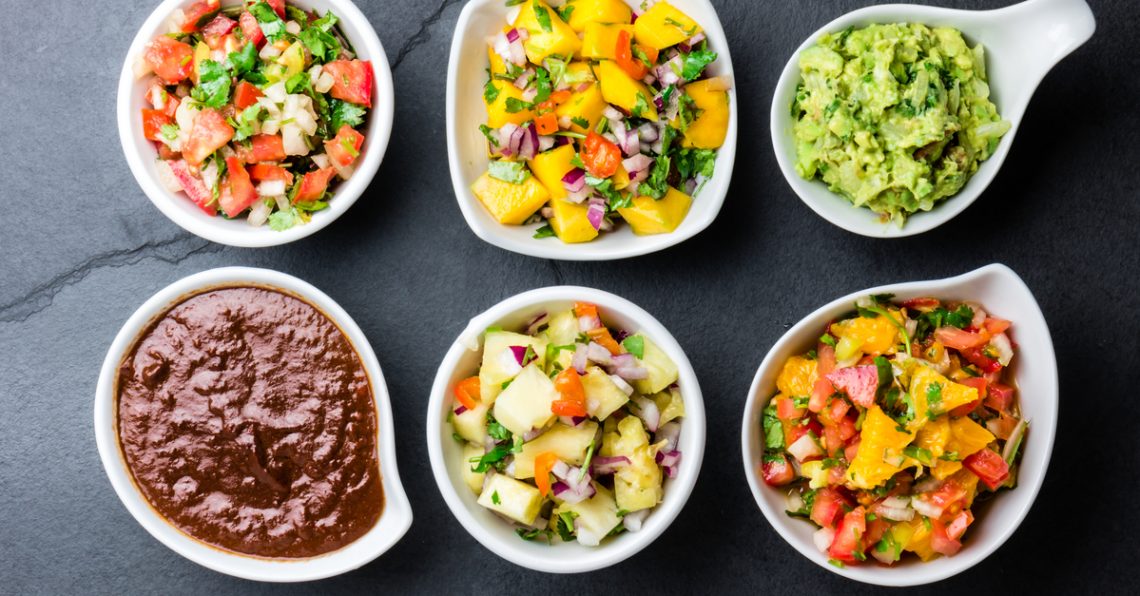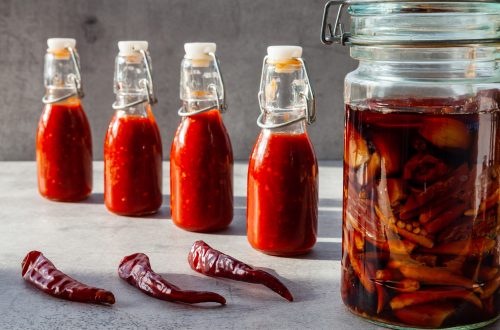
Saucy Salsas, So Simple and Savory
What a time to take advantage of all the fresh fruit and vegetables now available at local markets, farm stands, and maybe your own garden patch! The hot weather of summer means grilling time, and what better to pair with those grilled meats than a good salsa?
Salsas (Spanish for sauce) have long been a fixture in Latin American cuisines, and Latin American cooks don’t limit them to tomatoes and hot peppers – and not just to serve with chips and tacos. Paired with grilled fare, a good salsa will open up the palate with different flavors that will round out a meal: smoke and fat from the meat, sweet and sour from the salsa.
I’ve long been a fan of salsa and, in fact, bought a salsa cookbook I found on a discount table at a bookstore some 25 years ago – a great find. Making your own is pretty simple, and here’s why you might consider it. The bottled versions are heated to nearly 200 degrees for safety reasons, eliminating their fresh taste along with some texture. You can buy freshly prepared salsa at the supermarket or farmers market, but it can be pricey and is usually limited to a tomato base.
Corn salsa
Here’s how I make a simple corn salsa. It starts with a cup of kernels cut from an ear or two of fresh sweet corn, combined with a half cup of chopped red pepper, a couple chopped scallions, and a large tomato, seeded and chopped. Make a dressing of 2 tablespoons each of olive oil and lime juice together with a quarter teaspoon each of cumin and salt. Add a pinch of black pepper, whisk to combine, add to your vegetables and stir. Throw in some chopped jalapenos and cilantro to taste, then adjust your seasonings. You can also add more protein with a can of black beans or cannellini beans, rinsed. There you have it. Corn and black bean salsa.
Maybe you’ve taken advantage of fresh tomatoes to make your own salsa cruda to serve as a dip with chips or with barbecued meat. For something different and really spicy, there’s tomatillo-habanero salsa, which definitely qualifies as the hottest I’ve ever made. When I used it to make a green rice dish, one of my guests exclaimed, “You serve this to guests?!” But certain members of my household consider it positively ambrosial.
Fruit salsa
To go with seafood, poultry, or egg dishes, try a sweeter salsa: sweet red pepper, peach, or avocado-mango salsa might be in order. The Salsa Cookbook suggests that a black-bean-papaya salsa is a good addition to a salmon salad. (This recipe is from New York Times Cooking.) The salad is made with grilled salmon broken into chunks, combined with mixed salad greens and topped with a cup or two of the salsa. How about cooking a few bay shrimp, stuffing them in a ripe avocado, and topping it with some mango or nectarine salsa? And on those really hot days, how about just chilling out with a watermelon salsa salad for dinner?
And there’s no need to confine salsa to grilling season. Come Thanksgiving, I’ve made cranberry-papaya salsa to go with the turkey. For a refreshing dessert any time you can get fresh fruit, try a dish of ice cream or pound cake topped with fruit salsa Romanoff, made with a couple cups of seasonal fruits (strawberries or raspberries), a third cup each of sugar and orange juice, and a splash of cognac or orange liqueur.
Ther’s nothing like the flavor and crunch of fresh fruit and vegetables, so why not take advantage of them? Do you have a favorite salsa?
To comment, please click on “Read in Browser” or on the headline to view the blog on the website. You can log in and comment at the end of the blog to share your thoughts and start a discussion.
If you’d like to share the blog, click on the Facebook icon or one of the others. Thanks!




One Comment
Mercy
I love your blog and it’s the only one I follow and subscribe to. Love your recipes, made many of them several times, they are always a big hit. I recently made your corn salsa with black beans recipe served with grilled salmon for my family and friends and it was delish. Keep it up!!!